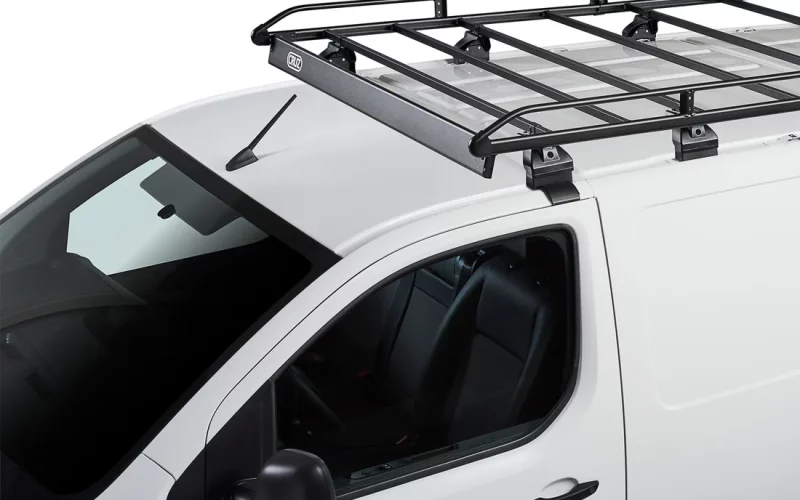Introduction
Carrying heavy loads on your vehicle can be a challenge, especially when your trunk or cargo area is not large enough. A roof rack is an excellent solution for transporting bulky or heavy items like luggage, camping gear, or building materials. However, not all roof racks are designed to handle heavy loads safely. Choosing the right roof rack requires understanding your vehicle’s limitations, the types of racks available, and how to secure cargo properly. In this article, we will guide you through selecting the perfect roof rack for heavy loads.
Understanding Your Vehicle’s Roof Load Capacity
Before purchasing a roof rack, it is essential to know your vehicle’s maximum roof load capacity. This information is usually available in your vehicle’s owner manual. Roof load capacity includes both the weight of the rack itself and the cargo. Exceeding this limit can damage the roof, affect vehicle handling, and pose safety risks. Always check the manufacturer’s specifications and consider adding a safety margin when planning to carry heavy loads.
Types of Roof Racks
1. Factory Roof Racks
Many vehicles come with factory-installed roof racks. These racks are specifically designed to fit the vehicle and handle a recommended weight limit. Factory racks are often reliable and easy to use but may have lower weight capacities than aftermarket options.
2. Crossbar Roof Racks
Crossbars are a versatile option for carrying heavy loads. They attach to your vehicle’s roof rails and allow for mounting different accessories, such as cargo boxes, bike racks, or kayak carriers. Aluminum crossbars are strong yet lightweight, making them suitable for heavy-duty use.
3. Platform Roof Racks
Platform racks offer a flat, open surface for carrying large items. They distribute weight evenly and provide multiple attachment points for securing cargo. These racks are ideal for construction materials, camping equipment, or bulky luggage.
4. Cargo Boxes and Baskets
Cargo boxes and baskets attach to crossbars and provide additional storage space. Cargo boxes are enclosed and protect your items from weather, while baskets are open and allow easy access to large or irregularly shaped items. Both options are designed to handle heavy loads if properly installed and secured.
Key Factors to Consider
1. Material and Strength
Roof racks are typically made of steel or aluminum. Steel racks are very strong and can handle heavy loads but are heavier and may cause extra stress on the vehicle. Aluminum racks are lightweight, corrosion-resistant, and strong enough for most heavy-duty uses. Always choose a rack made from durable materials suitable for the weight you plan to carry.
2. Load Distribution
Proper load distribution is crucial for safety. Unevenly loaded cargo can affect vehicle stability and handling. Platform racks or wide crossbars help distribute weight evenly across the roof, reducing strain on attachment points.
3. Mounting System
The way a roof rack mounts to your vehicle matters. Some racks attach to factory rails, while others clamp onto the door frame or use fixed points on the roof. Ensure the mounting system is compatible with your vehicle and capable of supporting heavy loads.
4. Aerodynamics and Noise
Heavy loads and poorly designed racks can increase wind resistance, causing noise and reducing fuel efficiency. Look for roof racks with aerodynamic designs to minimize drag while maintaining strength and stability.
5. Accessories and Compatibility
Check if the roof rack is compatible with accessories you may need, such as cargo boxes, bike mounts, or tie-down straps. A versatile rack allows you to carry different types of cargo without requiring multiple installations.
6. Safety Features
Safety is critical when carrying heavy loads. Look for racks with secure locking systems, anti-slip surfaces, and strong attachment points. Using high-quality straps or tie-downs ensures your cargo stays in place during transit.
Tips for Carrying Heavy Loads
1. Secure the Load Properly
Use high-quality straps, ropes, or ratchet systems to secure your cargo. Ensure that all items are tight and cannot shift during driving. Loose cargo increases the risk of accidents and damages both the load and your vehicle.
2. Check Vehicle Handling
Heavy roof loads raise your vehicle’s center of gravity, affecting stability. Drive carefully, especially around corners and during sudden stops. Reduce speed to maintain control and prevent tipping.
3. Regularly Inspect the Rack
Before long trips, check that all bolts, clamps, and straps are secure. Inspect the roof rack and mounting points for signs of wear or damage. Regular maintenance ensures safety and extends the lifespan of your roof rack.
4. Follow Legal Regulations
Some regions have laws regarding maximum roof load limits and cargo overhang. Make sure your load complies with local regulations to avoid fines and ensure safe driving conditions.
5. Plan Loading Order
Place heavier items closer to the center of the roof to maintain balance. Lighter items can go on top or around the edges. This improves handling and reduces stress on attachment points.
Common Mistakes to Avoid
- Overloading the roof beyond the vehicle’s limit
- Using a rack incompatible with your vehicle
- Failing to secure cargo properly
- Ignoring aerodynamics, which can lead to noise and fuel loss
- Neglecting regular inspection and maintenance
Avoiding these mistakes ensures a safer and more efficient experience when carrying heavy loads on your roof.
Conclusion
Finding the right roof rack for heavy loads requires careful consideration of your vehicle’s roof capacity, the type of rack, materials, and safety features. Properly distributing weight, using secure mounting systems, and following safety guidelines are essential for safe transport. Whether you choose crossbars, platform racks, or cargo boxes, selecting a durable and compatible roof rack ensures your heavy loads are carried securely and efficiently. By understanding these key factors and avoiding common mistakes, you can transport bulky items safely while maintaining vehicle performance and stability.
Read more exciting news on: worldwidedigest.com











